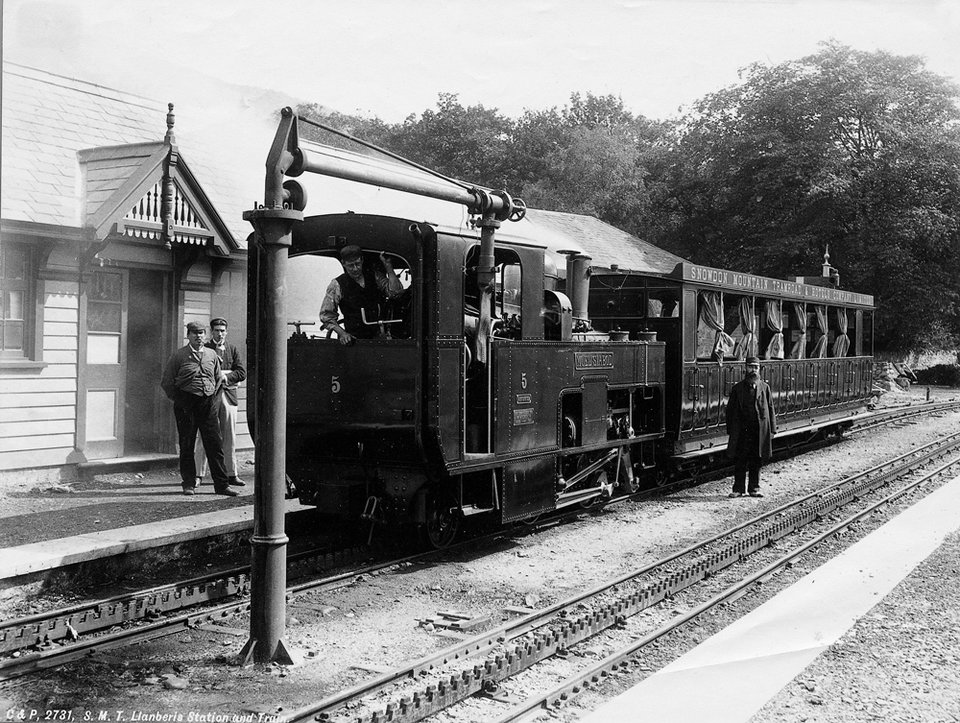The Snowdon Mountain Railway: batteries, steam and success
Steeped in history, literally and metaphorically, the Snowdon Mountain Railway (SMR) has been carrying sight-seeing tourists and locals to the summit of the UK’s second-largest peak for more than 123 years. Since 1896 it has run interrupted, taking passengers above the cloud cover to the top of Snowdon. Today, more than 12 million have set off from Llanberis station to enjoy the journey. From mid-March to the end of October, 140,000 people currently enjoy the beauty of the 1,085m climb.
Mike Robertshaw, senior engineering manager at SMR, is in no doubt as to why the attraction is so popular. “It is the only true mountain railway in the UK, Snowdon is the highest mountain in Wales, Snowdon is an iconic destination. People coming to Wales will want to cross the Snowdon Summit off their bucket list,” he says.
In August 2019 SMR, part of Heritage Great Britain, announced it had embarked upon a programme to replace existing diesel locomotives with new hybrid diesel ones. The hybrid engines include an 8-tonne battery pack and a diesel generator to re-charge batteries in service, with fixed battery chargers for overnight charging.
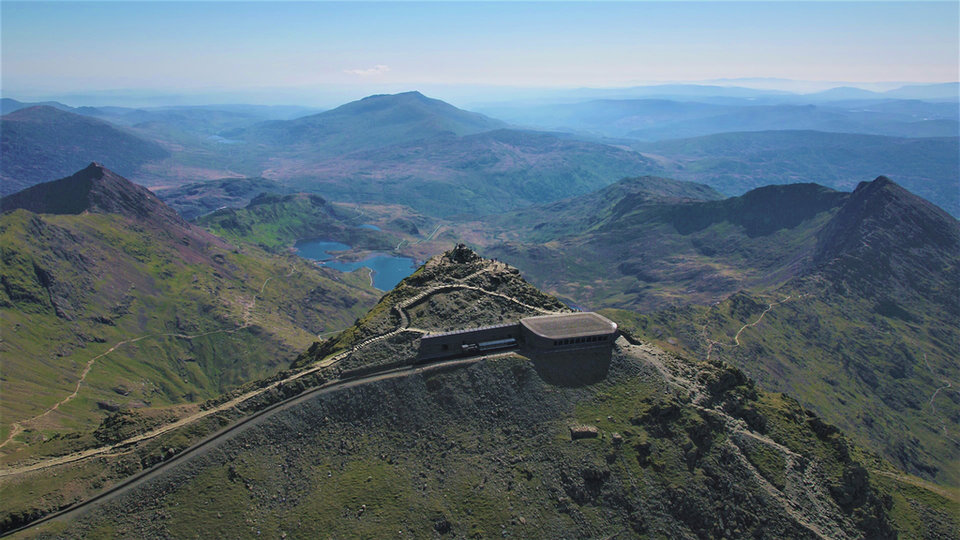
Snowdon is the highest mountain in Wales. Image: SMR
Although not yet finalised, SMR plan to operate in Llanberis area on battery power alone, operate the generator charging on the uphill journey, turn off the generator on the downhill journey and use the regenerative braking to re-charge. “We believe that this will save fuel – approximately 70l per locomotive per day in peak season. But more importantly, there are significant pollution reductions: noise, CO2 down 25%, NOx down 96%, HC down 85% and particulate matter down 98%,” says Robertshaw.
He says the diesel fleet is the commercial backbone of the business and the decision to replace it was based on “business protection”. An engine failure in 2017 cost the business £1.2m in lost revenue. Also, key components are quickly becoming obsolete, such as engine turbos and brake system valves. “The drivers' cabs are also dated and do not meet current standards for ergonomics, noise levels or comfort,” Robertshaw continues.
In 2018, SMR invited ten UK companies to tender bids for the work. Clayton Equipment was contracted with a plan and costing that “far exceeded expectations” according to Robertshaw. SMR took five years to develop its strategy, including conducting a detailed business review and assessing requirements and specifications.
The Snowdon Mountain railway development plan
However, the project is just one element of Snowdon’s railway. Robertshaw says the environment can present significant issues. The single track means there is no opportunity to use engineering trains alongside the track being worked on, and an 800mm gauge and rack and pinion means that on-track plant is not available. There are also the elements to contend with. “Weather on the upper mountain means that maintenance is difficult in the winter,” he says. “Conversely maintenance during the summer is difficult due to trains running every 30 minutes. The derailment girder also makes achievement of good track geometry difficult.”
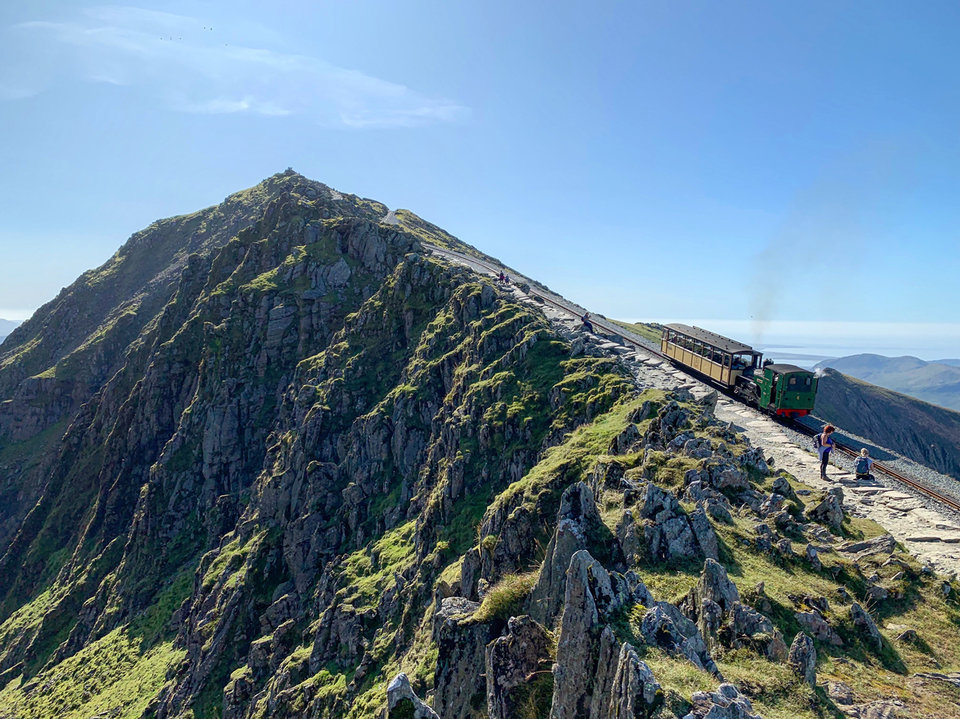
Image: Snowdon 2 – incline. Caption: Adverse weather conditions makes maintenance difficult in the winter. Image: SMR
SMR is currently working on removing the derailment girder, replacing the sleeper system and upgrading tracks. Robertshaw says the track form has always been weak – low strength rail and wide sleeper spacing – leading to track movement, rail bend and dipped joints. “We are currently renewing approximately 225m of track per year, with a view to increasing that to 450m,” he says, adding there will come a point the upper mountain will have to close early for track replacement. Currently, material costs stand at £85,000 per 225; all upgrade work is funded by SMR.
The business has big ambitions including the track replacement; improving the reliability of points, replacing the diesel fleet; developing cleaner steam generation for existing steam locomotives; and expanding capacity at the summit’s visitor centre, Hafod Eryri.
“The whole ethos for SMR is to preserve the railway for the future, to deliver improvements and to ensure that the business is viable for the future. For most people walking up a mountain like Snowdon is a challenge. A walk can take six to 8 eight, whereas the train takes two and a half. SMR makes it possible for all people to reach the summit,” Robertshaw concludes.
Cairngorm funicular railway: hoping to get back on track
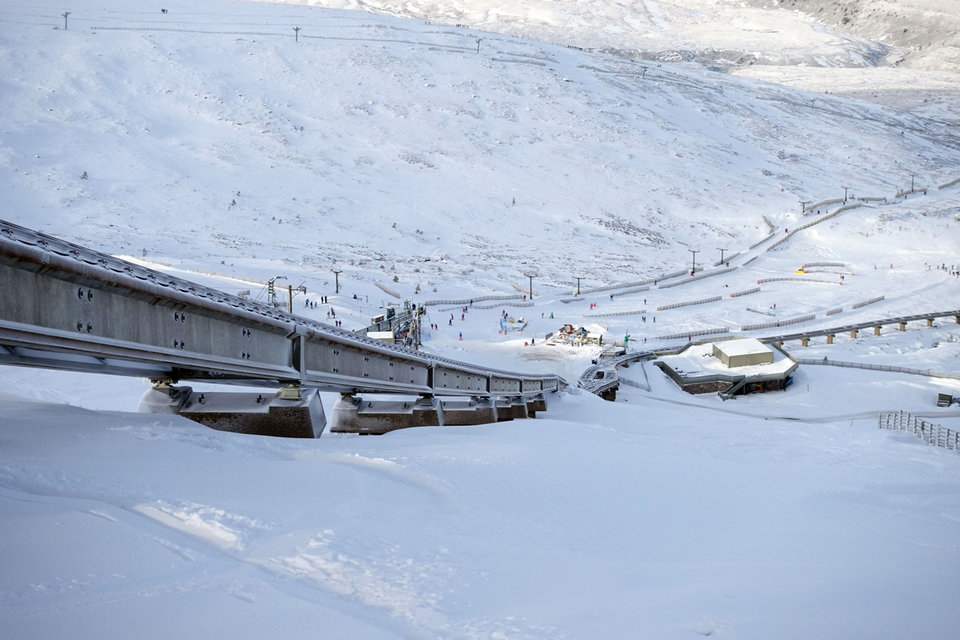
Cairngorm’s funicular runs to an altitude of 1,097m. Image: Paul Chappells / Shutterstock.com
The exceptional success of the SMR is in considerable contrast to the fortunes of the Cairngorm funicular railway. Built between 1999 and 2001, this route carries passengers the 2km journey from a base station to a restaurant 462m above, to an altitude of 1,097m up the Cairngorm Mountains. Up to 240 passengers can travel at any one time, moving at speeds of around 22mph in the best conditions.
In September 2018, the service stopped running due to safety concerns. “In the 2018 routine inspection, engineers recommended closer examination of the bearings that sit between the vertical piers and horizontal beams. That examination recommended a full structural investigation,” explains head of property and infrastructure at Highlands and Islands Enterprise (HIE), Dave MacLeod. HIE owns the facility.
Although the service has not resumed since, MacLeod says much has been done to secure the railway’s future. HIE has been looking at workable plans for repair – which engineers say is possible – and how costs would be met. “We are now working on a business case covering future options for the facility,” he says. “This is will be submitted to the Scottish Government for consideration. Subject to funding approval and gaining the necessary consents, a contractor can be procured to carry out the works.”
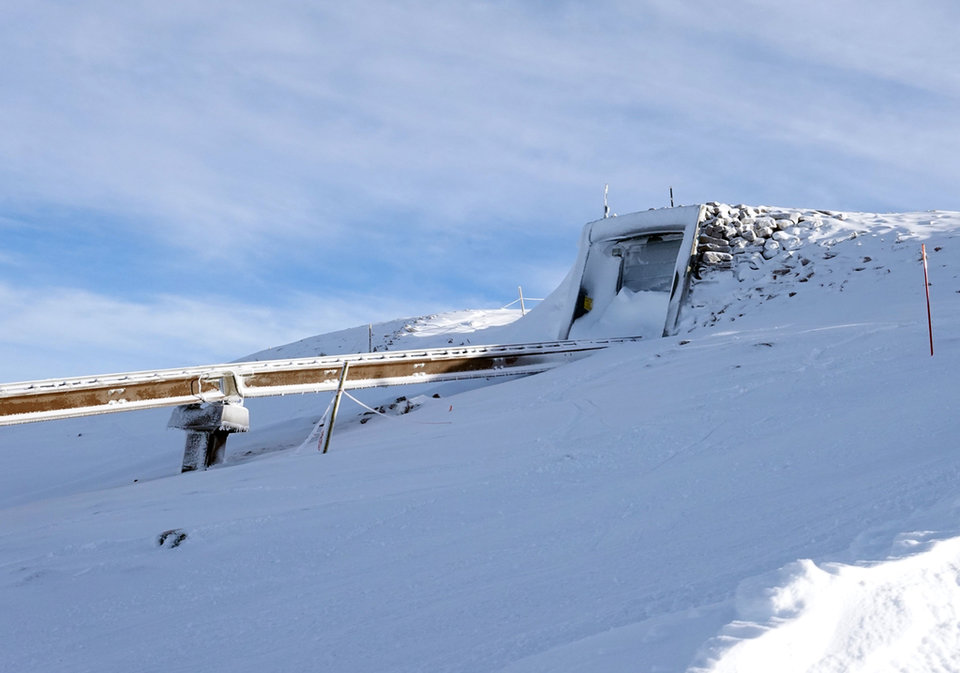
The Cairngorm funicular stopped running in September 2018 due to safety concerns. Image: Paul Chappells / Shutterstock.com
Like the SMR, the funicular presents significant maintenance challenges, let alone the type of work needed if the service is to resume in winter 2020 as is hoped. The climate means even running the railway engines is a challenge; their design had to incorporate the ability to travel in winds of up to 75mph. “The funicular is at a high altitude and exposed to extreme and unpredictable weather,” MacLeod says.
It is for this reason work would need to be carried out during a relatively short weather window between spring and autumn. However, even during these months conditions on the mountain can still cause delays. In an effort to manage expectations, MacLeod stresses this will be a complex engineering project in an extremely challenging environment. It is hoped work can begin in May 2020 if the service is to resume on time.
Since its closure, there has been strong debate as to the best plan of action, with claims the facility would never reopen. In the latest tale, HIE issued costs projections related to both options seemingly on the table. To close the railway altogether, it said, would cost at least £13.3m and would leave visitors without a means of ascent; repairing would cost £10m.
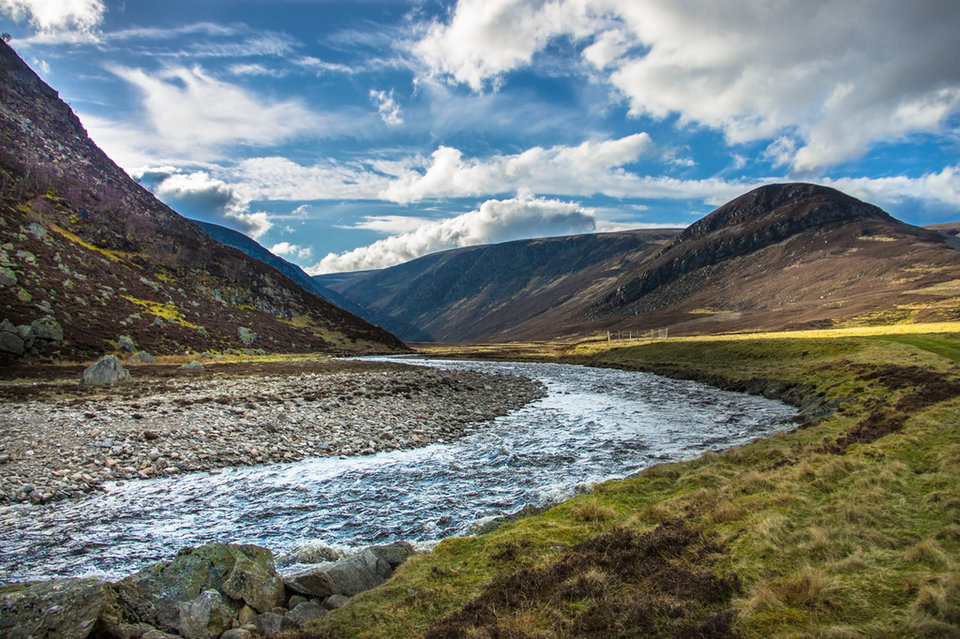
The Cairngorms National Park.
“Our hope is to repair the funicular and return it to full service by winter 2020, though we accept this is a best-case scenario and a very challenging timescale,” MacLeod concludes.
The beauty of SMR and the Cairngorm funicular railway are evident and equal, their similarities beyond that are not. Time will tell what future the funicular has, and how much more popular the SMR can become. Like the weather, for one at least, what lies ahead is unpredictable for now.
